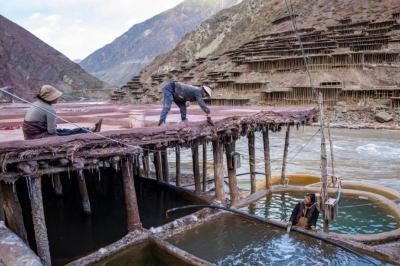 A member of the Gojo County Emergency Management Bureau's security inspection and law enforcement brigade rides a horse during a field trip. CHINA DAILY
The emergency management bureau of Gojo county in Chamdo city, Tibet autonomous region, was recently selected as one of China's 99 Good-Performance Emergency Management Institutes and received a national award from the central government.
According to the Ministry of Emergency Management, the bureau, along with other outstanding institutes from around the country, was listed on the ministry's official website between Oct 26 and 30 to solicit comments.
When the first National Commendation Conference for Models of Emergency Management and Loyal Fireguards was held in Beijing on Nov 4, three institutes and six individuals from Tibet won awards, including the Gojo bureau.
Gojo is the first county in the region to finish setting up emergency management stations at all its branches.
Jamyang Chozin, head of the bureau, said his county was the first to finish establishing emergency management services in its 12 townships, 107 villages, 17 schools and 64 monasteries.
It now disseminates emergency information via WeChat and Douyin, the Chinese version of TikTok.
"The number of emergency-related accidents and deaths in the county has been zero for nine consecutive years, and we have won the title of Safe Production Work Unit for six years in Chamdo," he said.
Located in the southeastern part of the Qinghai-Tibet Plateau, and lying at an average altitude of 4,000 meters, Gojo borders Sichuan province along a river and is the eastern gateway to Tibet.
Presently, its bureau has 14 workers, who perform emergency rescues and disaster prevention and reduction work in the townships.
Each of the 12 townships has an office dedicated to emergency management, which is equipped with computers, laptops, printers, scanners and explosion-proof cameras.
"In order to improve work efficiency and reduce errors, every township and village has a clear flow chart for safe production and natural disaster reporting", Jamyang Chozin said.
He added that each emergency management unit has a relief force made up of villagers, grassland, forest and river patrolmen, rural road maintenance workers and natural disaster monitors.
Losang Tashi, a member of the bureau's security inspection and law enforcement brigade, said the county has now equipped all its townships and eight of its villages with disaster relief reserve supplies, including safety helmets, horns, axes and cabinets containing fire extinguishers.
He added that the county stresses the importance of emergency management at monasteries, as they contain many valuable cultural artifacts, as well as at education institutes.
Most parts of Gojo are grassland, where residents' yaks, horses and sheep graze, while its eastern areas are covered in lush forest and brush.
"Both in the forested and pastoral areas, the roads are narrow, the hillsides are steep, and roads are often blocked by frozen snow, among other things, so it isn't always possible to drive," Losang Tashi said.
"In such circumstances, horses are the only means of transportation, so our workers often do their work on horseback. Their services are known as 'emergency services on horseback'."
By DAQIONG and PALDEN NYIMA in Lhasa |
- Home
- News Tibet |Exclusive |China |World |Related News |Latest
- Documents White Papers |Others
- Photo Politics |Economy & Society |Culture & Religion |Human & Nature |Beautiful Tibet |Other Tibetan-Inhabited Area |Exchanges |Related
- Video News |Documentary |Micro-Video |Entertainment
- Art
- Tourism
- In Focus
- About Tibet






